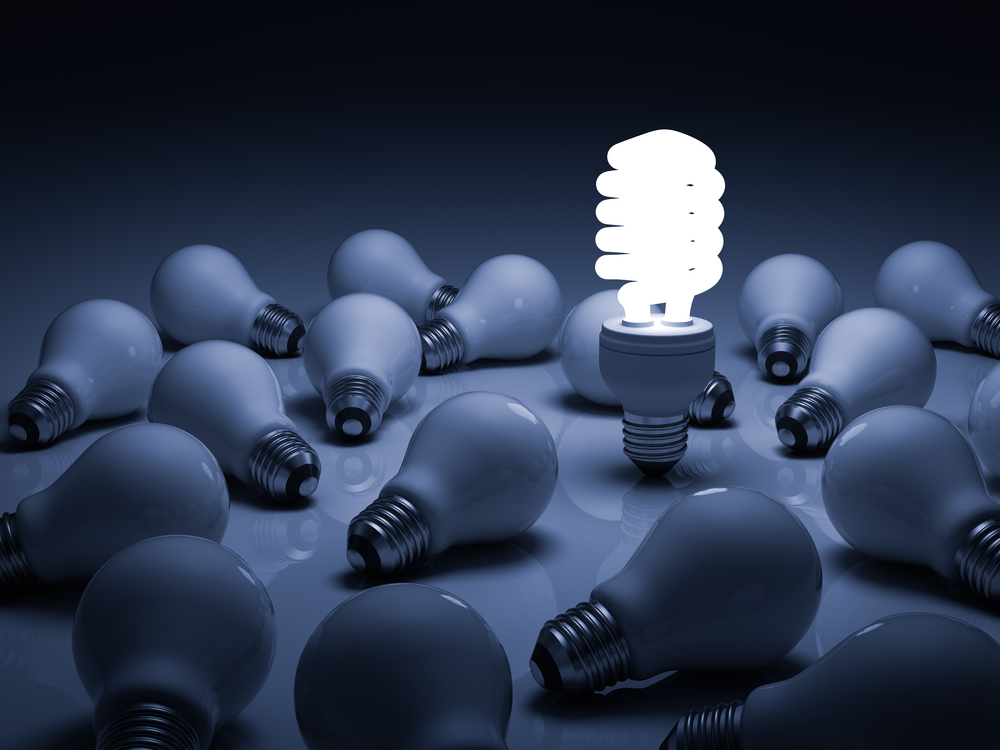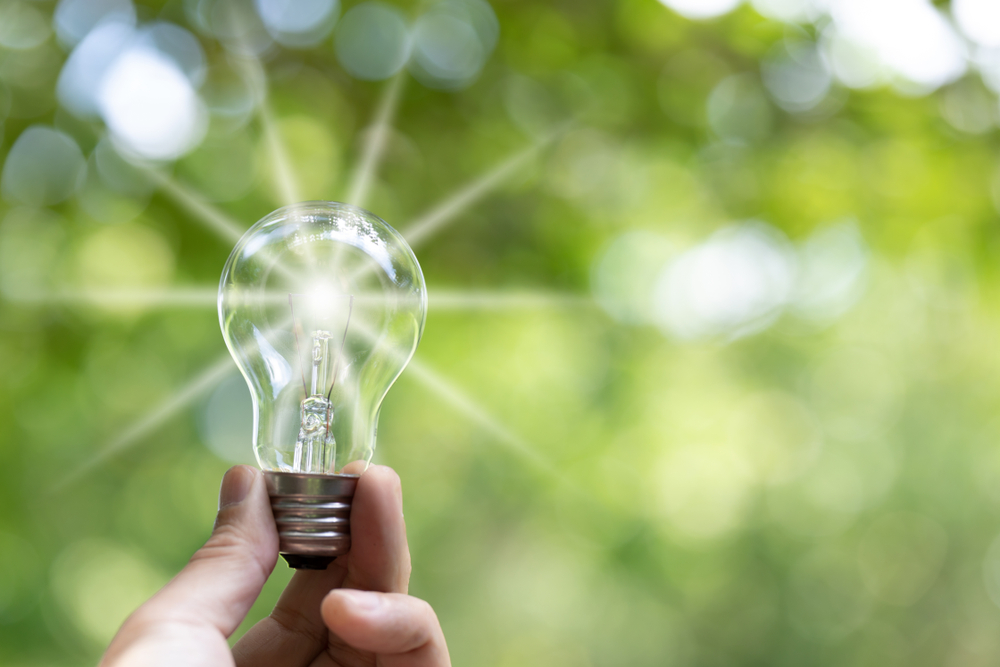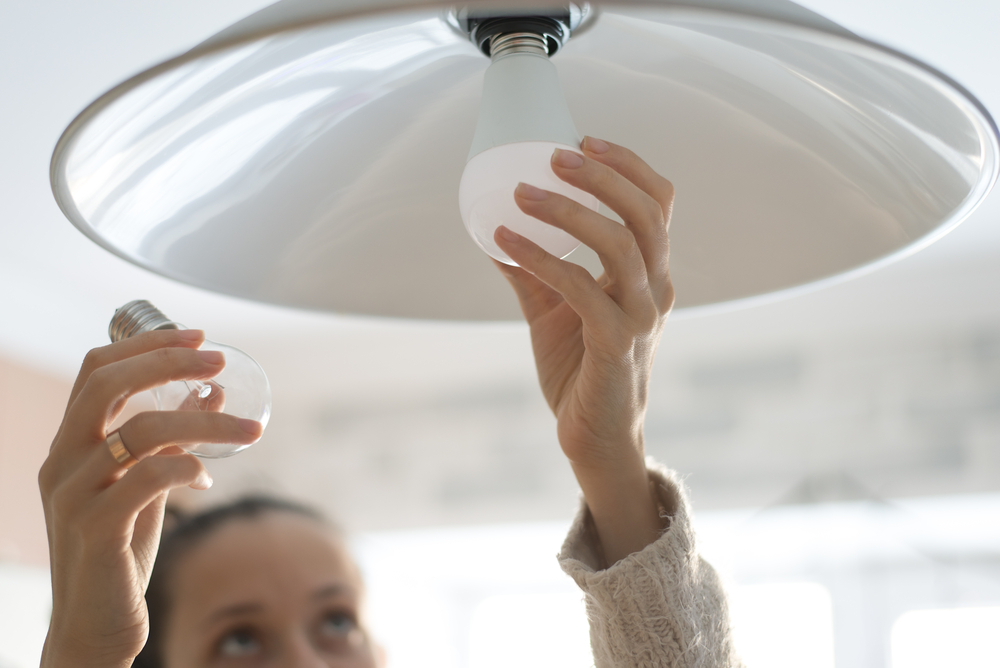What is the Most Energy-Efficient Light Bulb?
Lighting the home accounts for about nine percent of the home’s energy use. While those light bulbs don’t have as much impact on an electricity bill as the heating and cooling, those lamps and overhead lights still consume an impactful amount of energy.
Switching out older less efficient light bulbs for more energy-saving options won’t just decrease the energy use of the home, but it will nudge down the electricity costs, too. What is the most energy-efficient light bulb? LEDs top the list as the most efficient way to light the home.
Here’s what homeowners need to know about these bright and efficient bulbs.
What are LED Light Bulbs?
LED is an acronym for light-emitting diode. These bulbs have become the preferred way to light a home more efficiently. In the past, incandescent bulbs were the bulb of choice for lamps and other home lighting. Unfortunately, these bulbs burned hotter; they also didn’t have a long lifespan.
While the purchase price of incandescent bulbs was fairly reasonable, the cost to operate them added up. A 60-watt incandescent bulb that was used for five hours a day costs three cents in electricity. That might sound inexpensive, but the cost adds up over the course of a year.
Since homes didn’t just use one bulb, multiply that cost by many lights, and, suddenly, the true cost of incandescent becomes clearer.
LED bulbs don’t emit nearly as much heat. They also have an incredibly long lifespan. An LED bulb should last between four to six years. However, Bob Vila’s site explains that the bulb’s use could affect its lifespan, and some can last much longer than six years.
In addition, while the incandescent bulb will cost approximately $10.95 per year to operate, the cost of the LED is less than $2 per year. In addition, an LED lasts 10 times as long as an incandescent bulb!

What about CFL Bulbs?
While LED light bulbs are the most energy efficient choice, CFL bulbs also are more efficient than the old incandescent bulbs. A CFL—compact fluorescent light bulb—lasts nine times longer than an incandescent; over the course of a year, this bulb will cost $2.56 to operate.

What Makes the LED so Efficient?
Why is an LED light bulb so energy-efficient? This bulb doesn’t exude nearly as much heat as a CFL or an incandescent bulb, and this feature helps reduce energy. The bulb also lasts many years, which only adds to its affordability. While incandescent bulbs needed to be swapped out often, LED bulbs last many years.

Save Energy and Switch Bulbs
LED and CFL bulbs are now the dominant fixtures for lighting. Incandescent bulbs were once going to be discontinued, but the BBC explained that they would continue to be offered to homeowners. The reason was due to the high cost of more energy-efficient bulbs.
However, switching out incandescent bulbs for more energy-efficient options can help homeowners reduce their energy waste and lower their electricity bill, too. For homeowners who are worried about the cost of switching out all their bulbs at once, handling this upgrade in phases could be a more affordable option.
Homeowners can purchase a few LED bulbs at a time and switch out older bulbs as they burn out. Eventually, all the bulbs in the home can be swapped for LED.
Some areas also offer reduced-priced LED bulbs through a utility provider. Rebates also could be available for LED bulbs. To find rebates for energy-efficient light bulbs, use the ENERGY STAR Rebate Finder search tool.
Other Ways to Save Energy on Lighting the Home
Homeowners sometimes waste energy because of bad daily habits. Even homeowners who switch out all their bulbs to LEDs could still better maximize their lifespan with good habits. Here are a few ways homeowners can help decrease the energy waste related to their home’s lighting:
- Turn off the lights when leaving a room.
- Connect lights to the Internet of Things via smart plugs or smart powerstrips. These let homeowners control the lights via their smartphone or tablet.
- Use natural lighting. Open the curtains during cooler days to use the sun to light the home.
- Use timers for lights. This ensures they automatically turn off.
While LED light bulbs are the most energy-efficient lighting option, some homeowners might not find the up-front cost of these bulbs to be an affordable option. Homeowners shouldn’t worry about switching out all their light bulbs at once, though.
To embrace energy-efficiency, homeowners can gradually switch incandescent bulbs to LEDs as the old bulbs burn out. LED bulbs might cost more money up front, but these bulbs are less expensive to use and last for many years.


